We may earn revenue from the products available on this page and participate in affiliate programs. Learn More ›
Climbing trees, treetop forts, and swings are childhood staples. But what kind of tree works best for these kinds of activities and how do you ensure fun but safe tree play? If you have young family members or friends who want to hang off or play in your backyard trees, there are a few things to know to keep the kids safe and the tree healthy.
Whether creating the neighborhood’s coolest treehouse or installing some playground equipment for children who like to defy gravity, here are 12 ways to plan for and prep your backyard tree for years of entertainment.
RELATED: 12 Things an Arborist Wishes You Knew
1. Choose an appropriate tree.
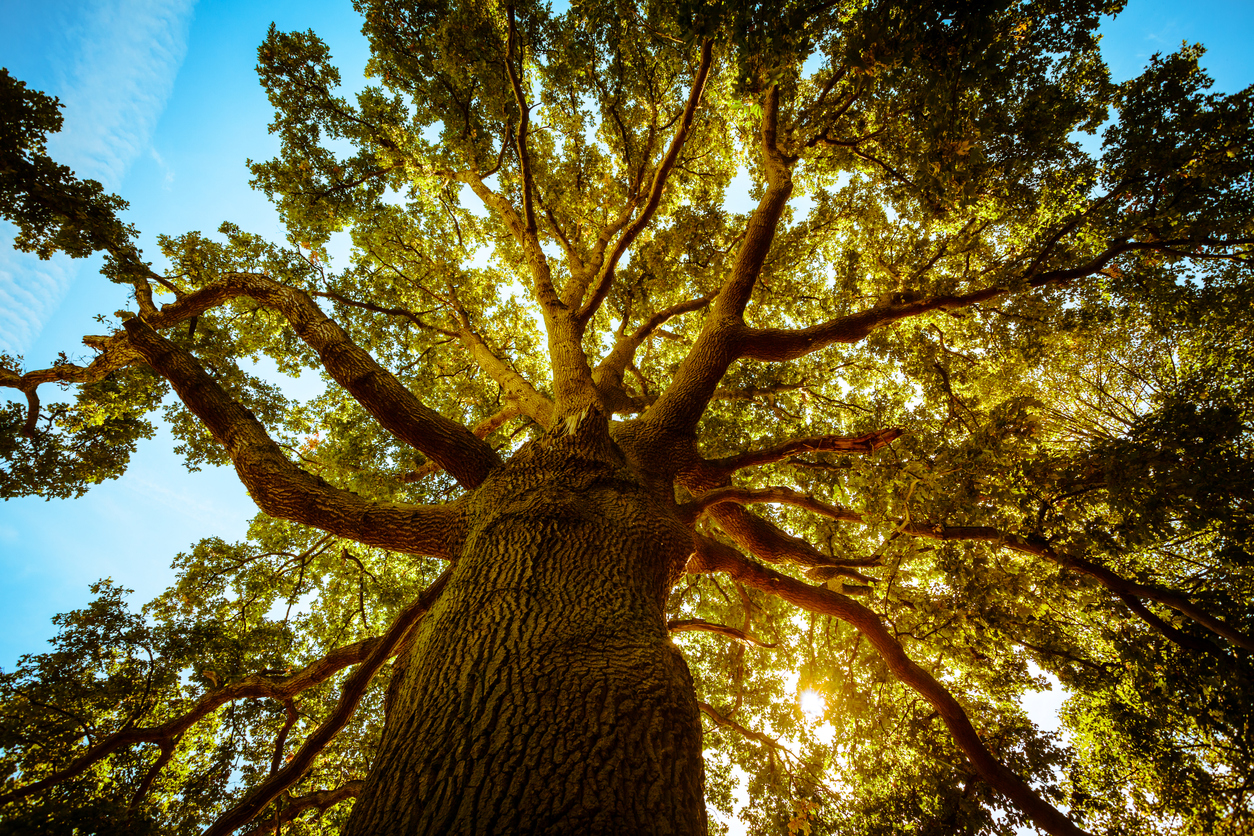
The ideal backyard tree for play will be medium to large and mature. Trees like maple, oak, and Douglas fir are often among worthy choices. The tree should be healthy, with robust branches that won’t crack or break. Your play tree should easily handle the weight of climbing children, a treehouse structure, or a swing setup.
To keep your ideal play tree safe and free from disease, do not hammer nails into it. The reason is that nails can introduce infection, pests, and other issues that can cause damage.
RELATED: 22 Fast-Growing Shade Trees to Plant in Your Yard
2. Select the right branch.
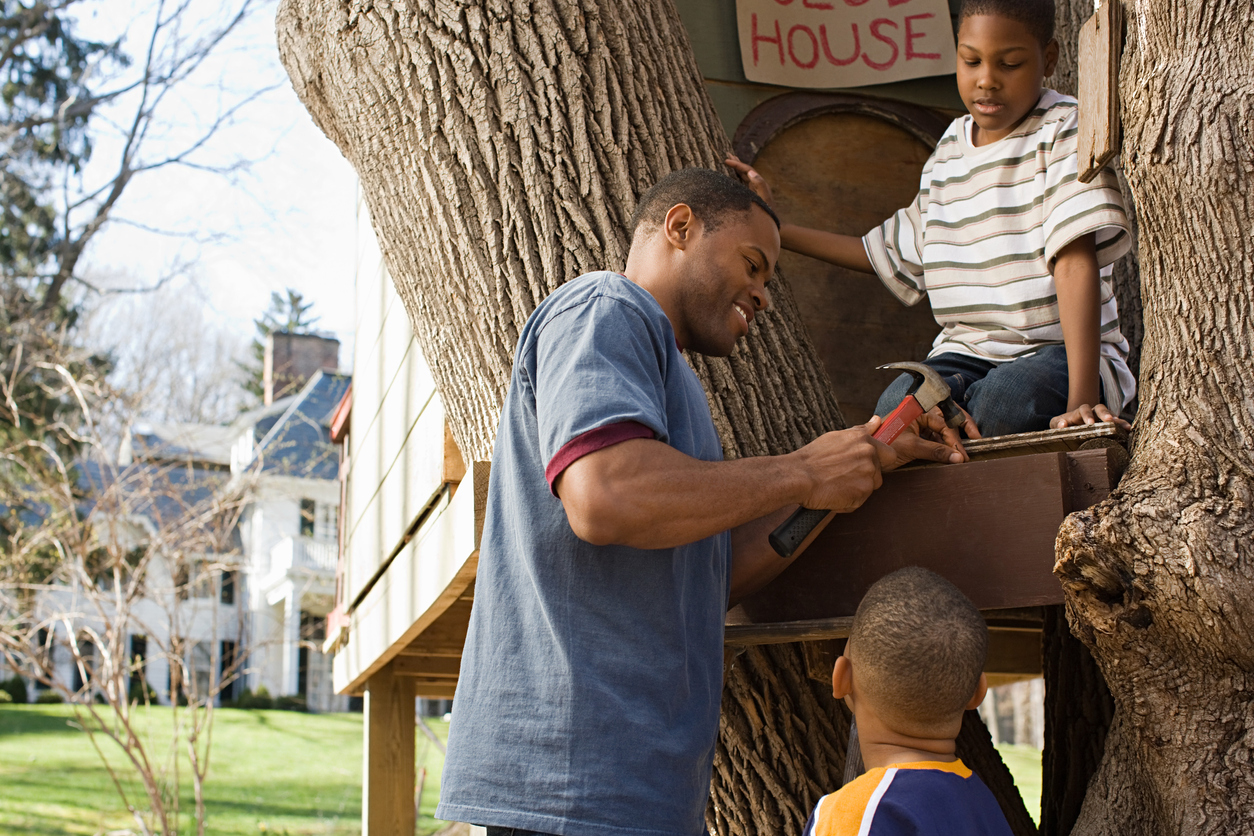
In terms of branches, pruning young trees can lead to strong mature trees. If you’re planning far in advance, remove any small or weak branches so the tree can focus on providing nutrients to the strongest ones. This helps your trees create branches that are strong and well-suited for play.
When determining where to place your play structure, look for branches that are not broken, diseased, or weak. You’ll want to test out the strength of the branch in many ways—hang from it and climb it. If you are the slightest bit unsure about its strength, call an arborist to get some advice.
3. Find or make space for a swing.
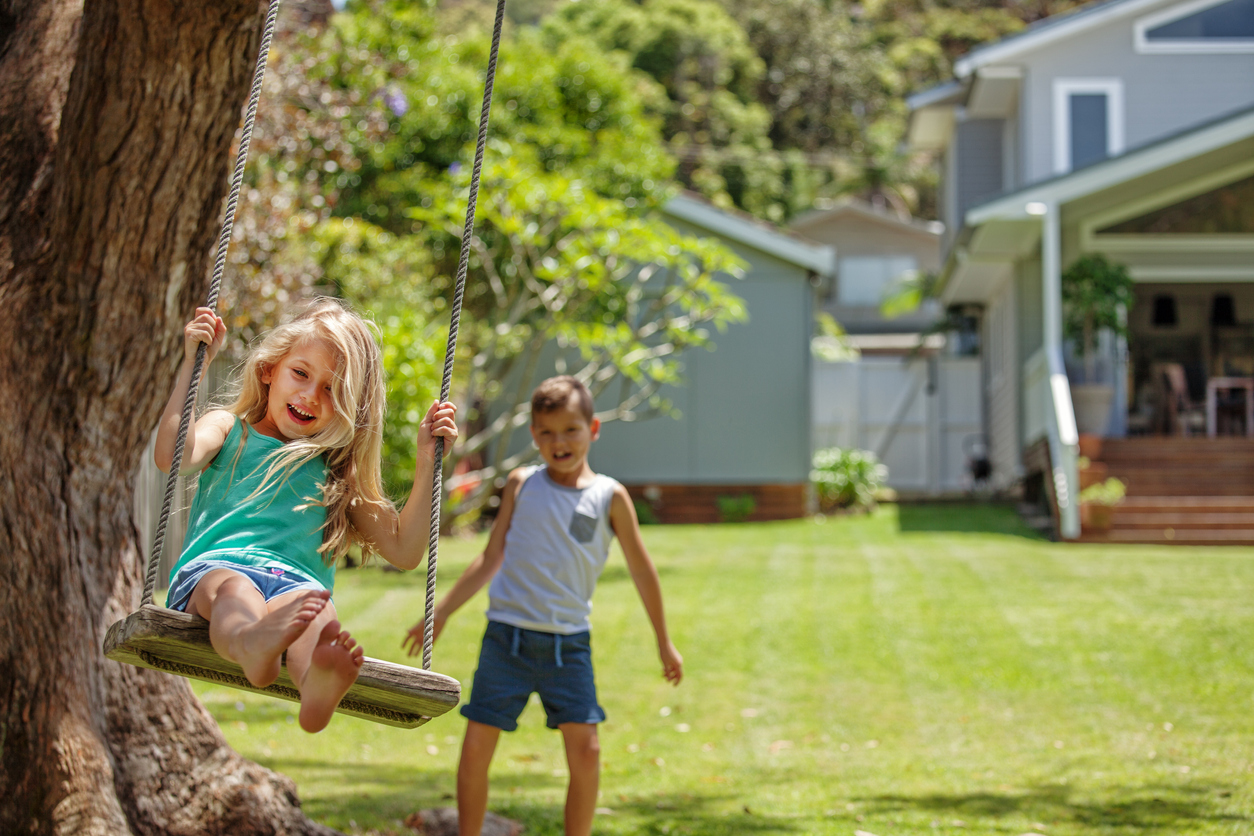
If you make a tree swing, have plenty of space available around the swing. You’ll want lots of clearance beyond the length of the swing to prevent injuries. Swinging from a tree requires space in front of and behind the swing, both on the ground and in the air. When planning a backyard tree swing, consider the arc that the swing will travel when determining the required length, width, and height dimensions.
4. Do a height calculation.
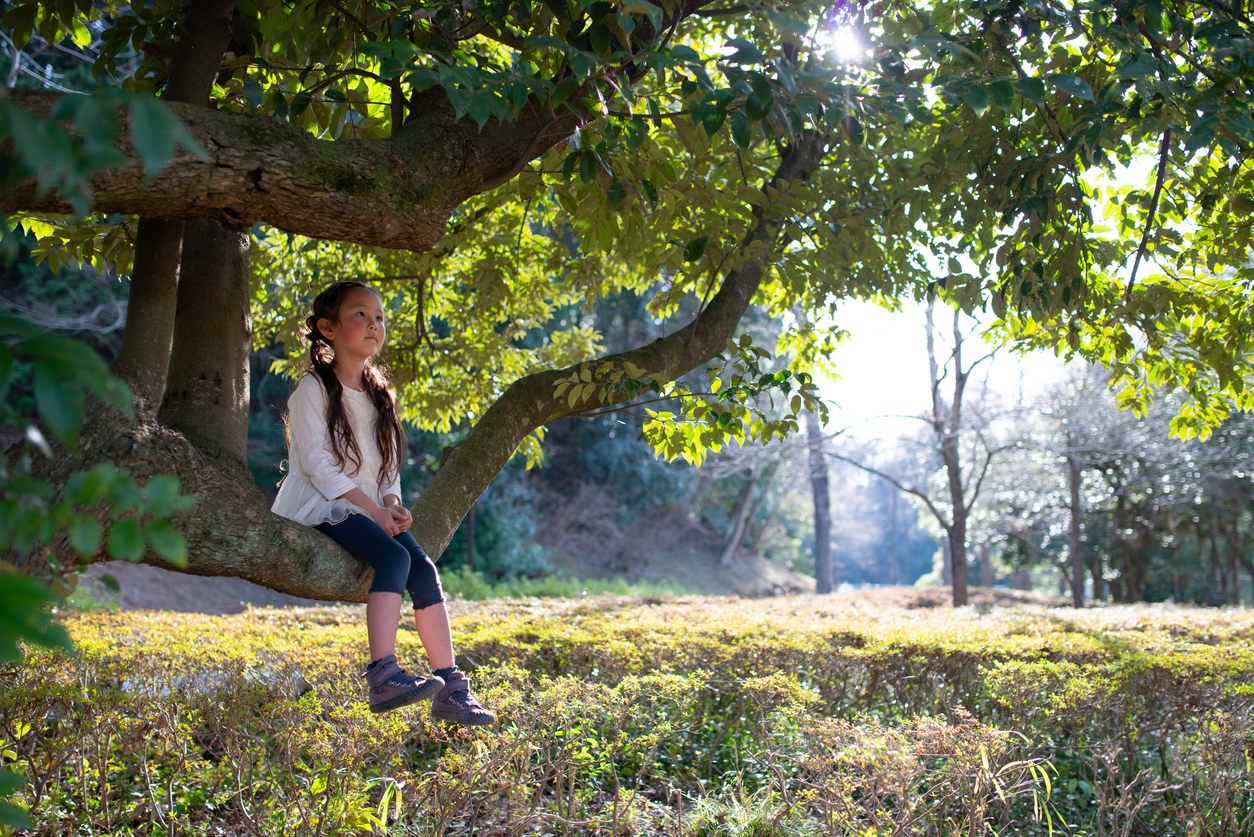
The best height for a tree swing will depend on your chosen branch and desired swing height. Aim for a branch high enough off the ground when making a tree swing, since a lower branch may not be high enough to enable much of a swing arc. You also want to consider how high off the ground kids need to sit to avoid having their feet drag.
According to treehouse safety experts, the best height for your treehouse is low to the ground. Anything from ground level to a maximum of 10 feet high is ideal, but the lower, the better to reduce the risk of injury from falling.
RELATED: Trees and Property Lines: 9 Things All Neighbors Need to Know for Storm Season
5. Find tree-friendly climbing options.
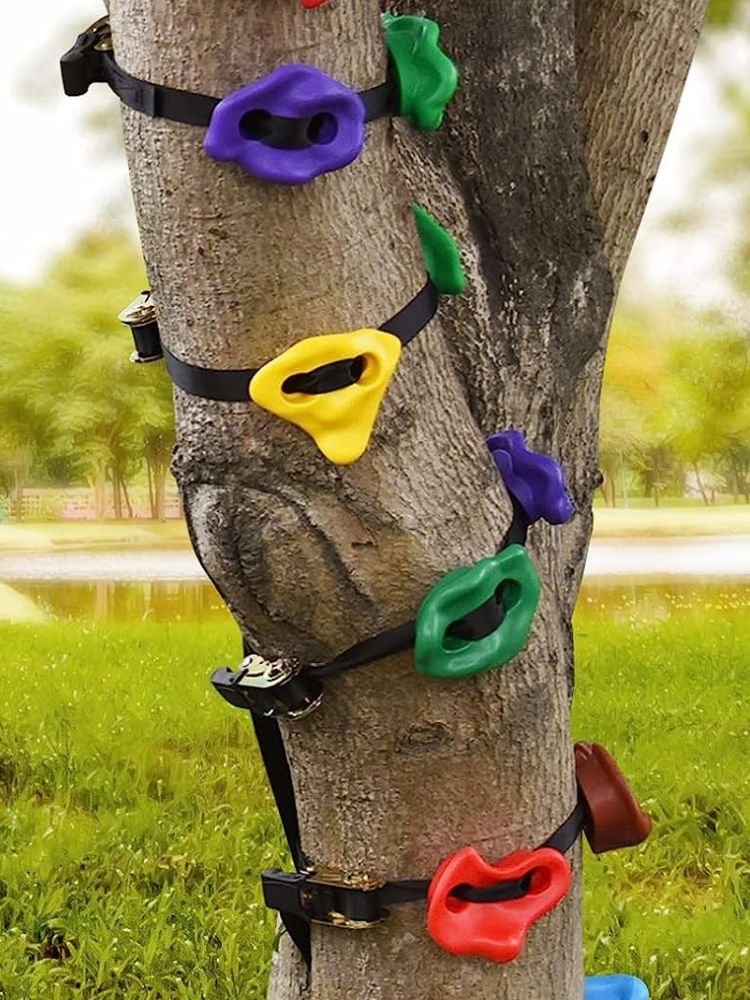
When it comes to tree climbing, you can make or buy ladder rungs. If you choose the DIY route, remember that nailing into trees is not advised, according to tree maintenance experts, since it can lead to disease or weakness. This means that sawing up some 2×4 pieces of wood and nailing them to the tree might not be a viable option for tree health.
Instead, consider buying some tree-friendly steps or holds. For instance, this Ninja Climbing Kit for Kids at Amazon features climbing holds that wrap around the tree using ratchet straps rather than nails.
6. Determine the best placement for treehouse platforms.
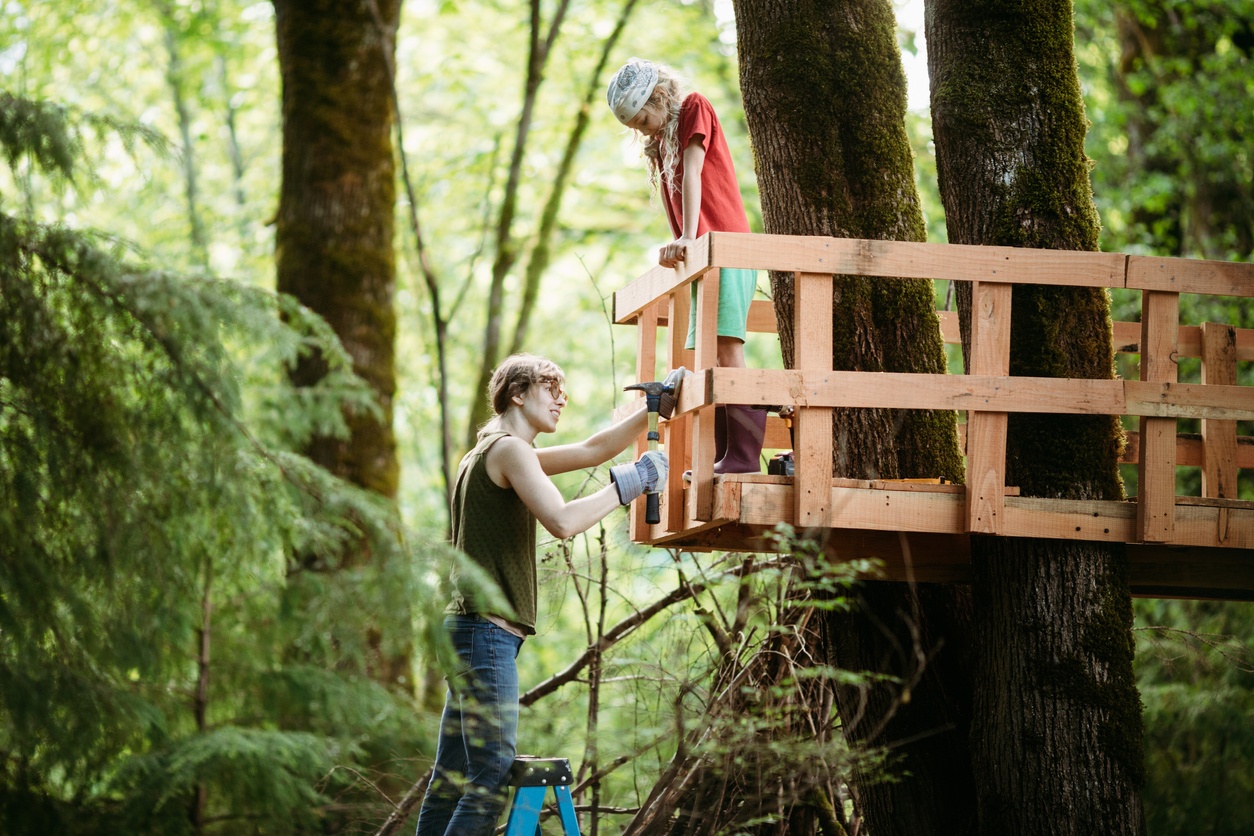
Consider the spacing relative to your property line when determining where to put platforms for backyard play structures. Avoid placing your treehouse on the property line, as that could cause friction with the neighbors. The ideal location for your play structure should be free of obstacles and shaded in the summer for long days and evenings of fun play.
A one-story accessory building such as a treehouse might not require a building permit, but in some locations, it does. Check local state or city regulations to see if they require a permit before installing a treehouse.
RELATED: 11 Pro Tips for Strategically Planting Trees on Your Property
7. Plan your structure in advance.
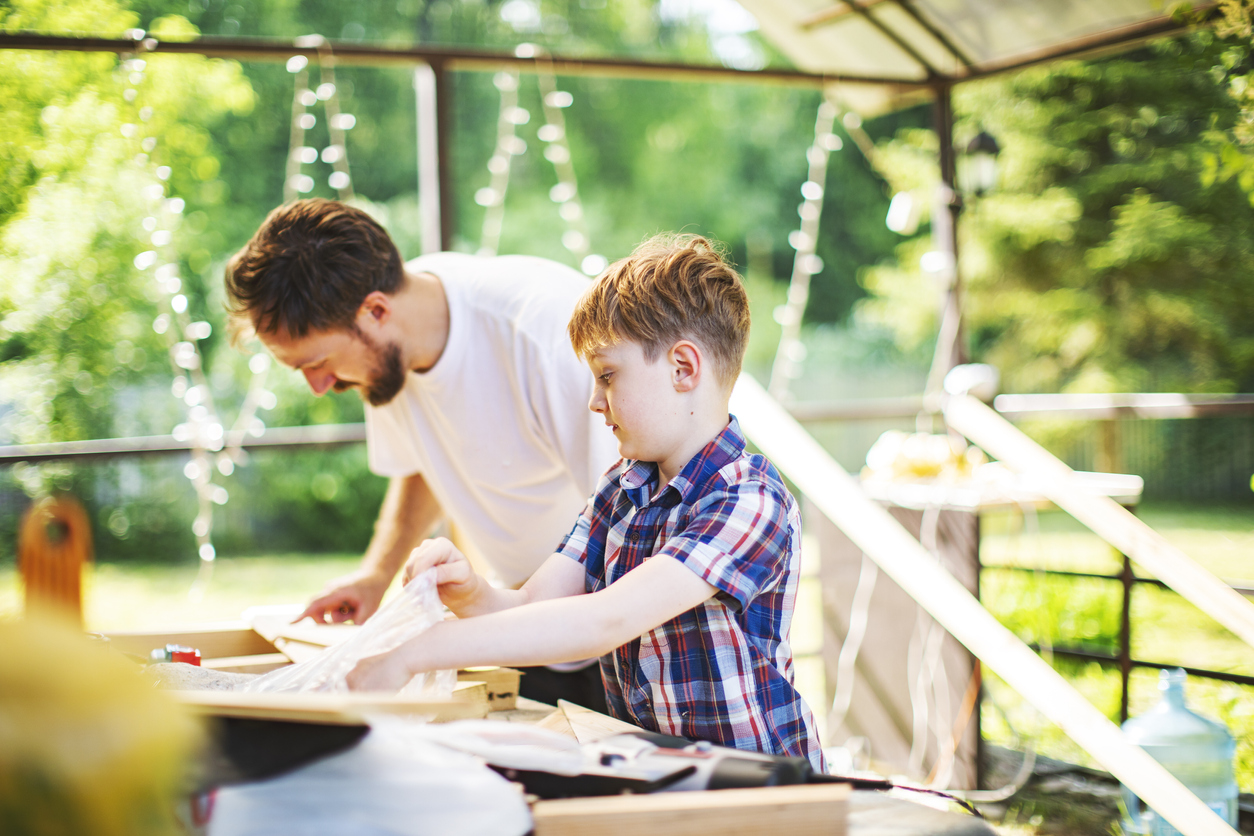
The tree that serves as the foundation of a tree fort requires a lot of planning to ensure it’s structurally sound and safe. It’s important to make your plans fit the tree and not the other way around. Designs can alleviate stress on the tree by creating supportive posts running from the treehouse to the ground. You may choose pre-made building plans, or perhaps you’ll design your own structure—either way, get or create blueprints.
You also need to consider who uses the treehouse and how long you expect them to use it. The treehouse will need to support the height and weight of these kids for years, so plan accordingly.
8. Prune the tree.
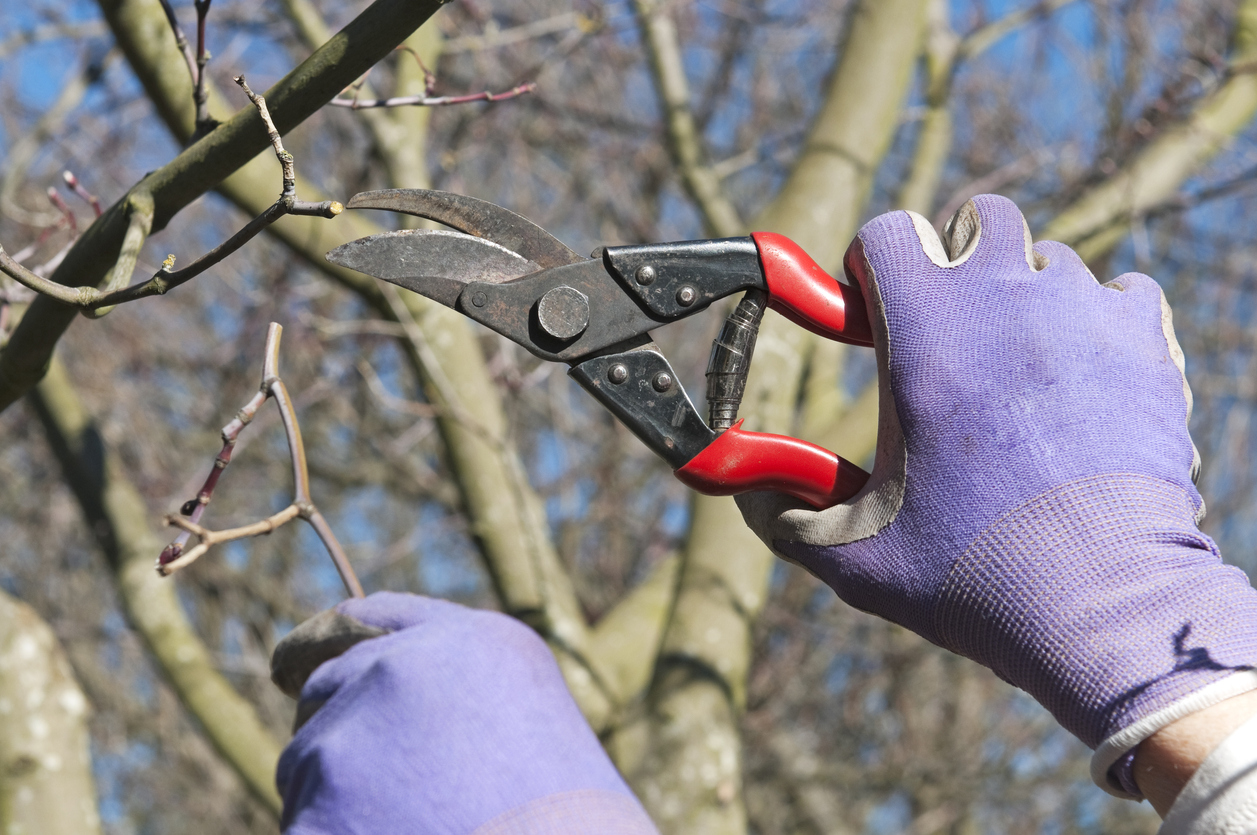
The best time to start pruning your trees is when they are young to help create strength in the tree’s structure and avoid losing branches or limbs. Throughout the tree’s life, look up and follow specific instructions for the tree type, since pruning techniques and timing can vary between species.
When it is time to add a swing or treehouse, decide how to prune your tree for safety and structure. In general, you’ll want to eliminate extremely small branches or growths on the trunks and branches. This removal helps make the tree more friendly for climbing and enables it to focus its resources on the healthiest limbs and branches.
9. Give your tree the nutrients it needs.
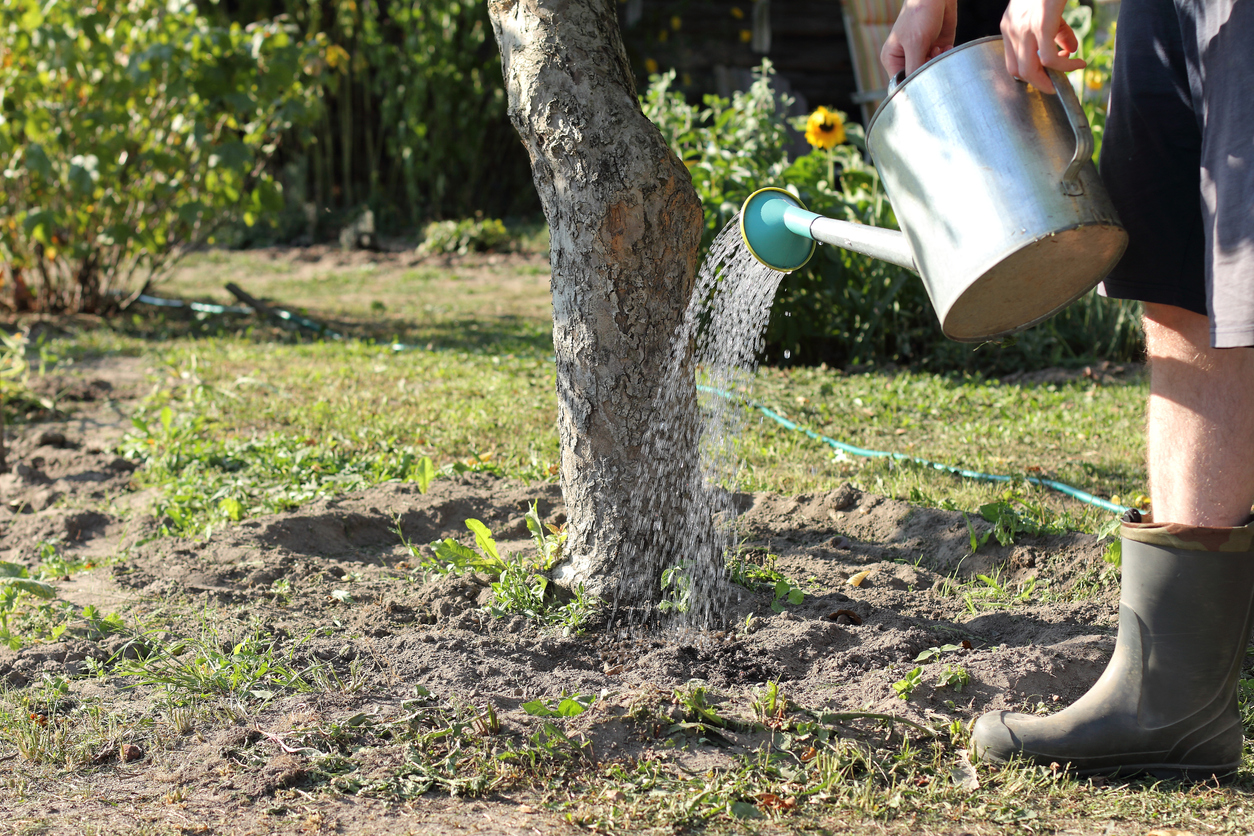
When prepping for a play structure in a tree, you’ll likely spend a lot of time looking up and assessing variables in and around the branches. If you want that tree to stay healthy for long-term play, you’ll also want to spend some time thinking about what’s happening below the ground.
To give your tree all the nutrients and water it needs, clear away debris from the base of the tree—from the trunk to the width of the tree branches. Removing this vegetation reduces competition for the good stuff in the soil the tree needs to thrive. Plus, thick layers of debris or thatch can prevent some water and air from filtering into the ground.
RELATED: 10 Trees That Spell Trouble for Your Yard
10. Make or buy your tree swing.

Depending on how much of a project you want this to be, you can make your own swing with rope and a piece of wood. If you decide to go that route, check out our DIY swing set guide.
However, if you have the funds and little time, there are some innovative new offerings on the market for backyard play swings. For example, this saucer-style tree swing is much larger than a conventional swing and can hold two children. It provides a stable platform held up by four sturdy ropes, making it a safe option for children and parents alike.
11. Teach your kids treehouse safety.

With nearly 2,800 trips to the emergency room due to treehouse-related injuries each year in the United States, safety is paramount. Though you will adopt and share rules for treehouse or tree-climbing play, you also might want to get to know important safety tips as you prepare and build a play structure in a backyard tree.
Avoid using loose ropes, rope ladders, or chains for accessing the treehouse, since they can be a strangulation hazard. Use a solid barrier rather than a railing for the perimeter of the treehouse to help prevent falls. Lastly, avoid building near electrical wires, since a child may accidentally try to grab the lines.


